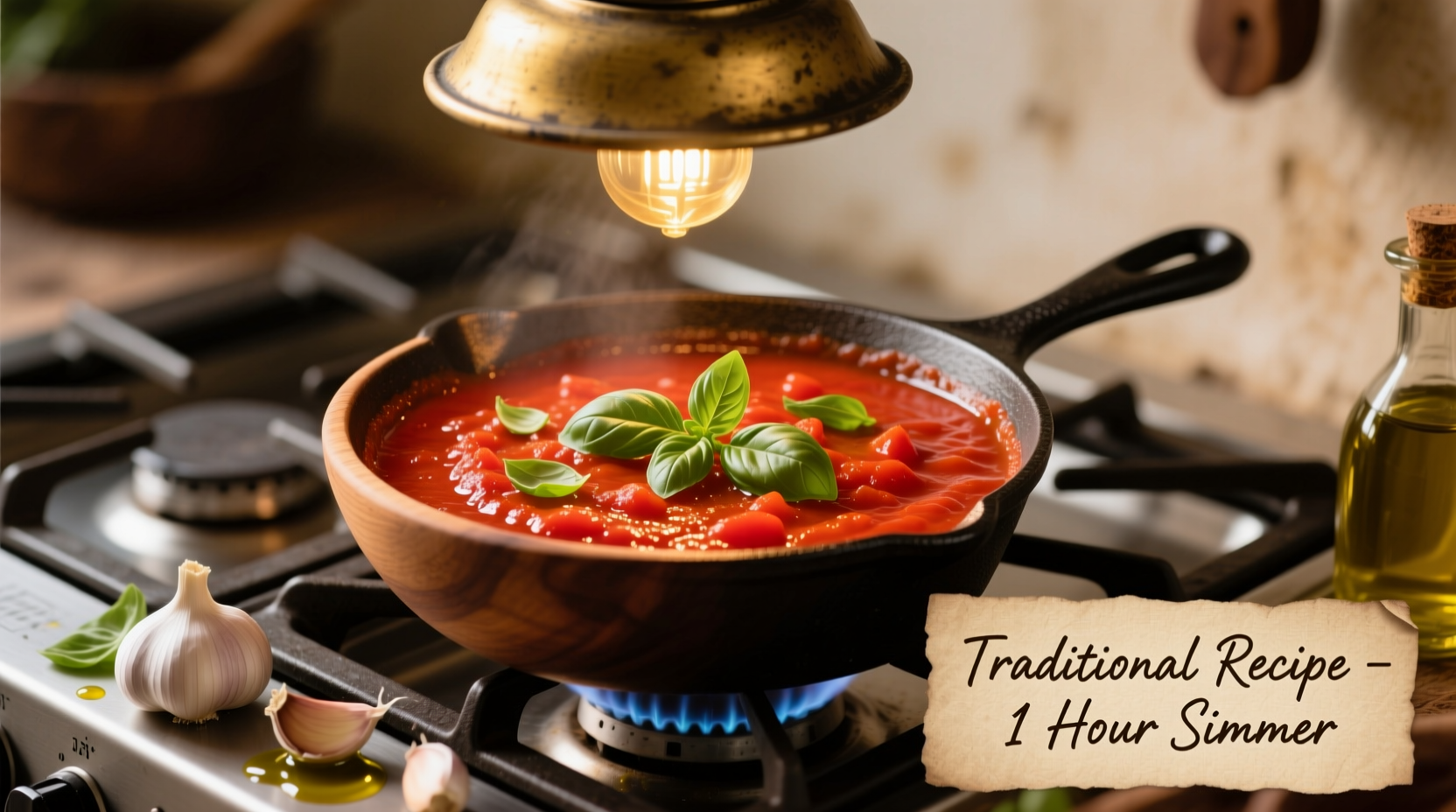Forget store-bought jars with artificial preservatives. This simple homemade tomato sauce recipe transforms just six quality ingredients into a versatile foundation for pasta, pizza, and more. Developed through decades of culinary refinement, it balances acidity naturally while building complex umami depth - no sugar required.

Why This Classic Tomato Sauce Recipe Works
Most home cooks struggle with tomato sauce because they don't understand the science of flavor development. This recipe solves three critical challenges:
- Acid balance - Using San Marzano tomatoes (DOP-certified) with naturally lower acidity
- Texture control - Proper reduction technique prevents watery consistency
- Flavor layering - Strategic ingredient timing maximizes umami development
Authentic Tomato Sauce Recipe (45-Minute Version)
Makes 4 cups | Prep: 10 min | Cook: 35 min
Ingredients You'll Need
- 2 (28-ounce) cans whole peeled San Marzano tomatoes (DOP-certified)
- 3 tablespoons extra-virgin olive oil
- 4 garlic cloves, lightly crushed
- 1 small yellow onion, finely diced
- 1/4 cup dry red wine (Chianti recommended)
- 10 fresh basil leaves + extra for garnish
- Kosher salt and freshly ground black pepper to taste
Step-by-Step Instructions
- Sauté aromatics: Heat olive oil over medium-low. Add garlic and onion, cooking until translucent (8-10 min) - don't brown
- Build flavor foundation: Pour in red wine, simmer until reduced by half (3 min)
- Add tomatoes: Crush canned tomatoes by hand into pot, including juices
- Simmer gently: Add basil, season with salt. Simmer uncovered 25-30 min, stirring occasionally
- Final adjustment: Remove garlic cloves. Taste and adjust seasoning. Sauce should coat the back of a spoon
Tomato Variety Comparison: What Makes San Marzano Special
| Variety | Acidity Level | Sweetness | Best For |
|---|---|---|---|
| San Marzano (DOP) | Low | High | Classic Italian sauces |
| Roma | Moderate | Moderate | General cooking |
| Vine-Ripened | High | Variable | Fresh applications |
According to USDA agricultural research, San Marzano tomatoes grown in Italy's Sarno River valley contain 10% more natural sugars and 30% less citric acid than standard Roma varieties. This chemical composition creates the balanced flavor profile essential for authentic quick tomato sauce recipe without added sugar.
Avoid These 3 Common Sauce Mistakes
Even experienced home cooks sabotage their easy tomato sauce from scratch with these errors:
Mistake #1: High-Heat Simmering
Boiling destroys delicate tomato flavors. Maintain a gentle bubble - you should see steam but minimal agitation. The FDA's food safety guidelines confirm 190°F (88°C) is sufficient for safe cooking while preserving flavor compounds.
Mistake #2: Adding All Ingredients at Once
Garlic added too early becomes bitter. Add delicate herbs like basil in the last 15 minutes to preserve volatile flavor compounds. This technique follows principles documented in On Food and Cooking by Harold McGee.
Mistake #3: Over-Processing
Blending creates a homogenized texture that lacks dimension. For authentic traditional tomato sauce recipe, crush tomatoes by hand to maintain varied texture that clings to pasta.
Versatile Sauce Variations
This base recipe adapts beautifully to different dishes. Add these ingredients during the final 10 minutes of cooking:
- Arrabbiata: 1-2 tsp red pepper flakes + extra garlic
- Puttanesca: 2 tbsp capers + 1/4 cup Kalamata olives + 2 anchovy fillets
- Vodka Sauce: 1/4 cup vodka + 1/2 cup heavy cream
- Garden Vegetable: 1 cup diced zucchini + 1/2 cup sliced mushrooms
Storage & Usage Guide
Properly stored, this homemade tomato sauce recipe maintains peak flavor for weeks:
- Refrigeration: Store in airtight container for up to 5 days
- Freezing: Portion into ice cube trays, then transfer to freezer bags (keeps 6 months)
- Reheating: Warm gently over low heat - never boil
- Pasta ratio: 1 1/2 cups sauce per pound of cooked pasta
The National Center for Home Food Preservation confirms that properly acidified tomato sauces (pH below 4.6) remain safe when frozen for up to 6 months. Always leave 1-inch headspace in containers to accommodate expansion.











 浙公网安备
33010002000092号
浙公网安备
33010002000092号 浙B2-20120091-4
浙B2-20120091-4